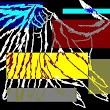
plus twov
310 Points
Joined March 2015
Can someone please explain why in problem no. 10 of Chapter 2 of AMA in PM depreciation is considered for finding out incremental cost, why the value taken was not 1420000 in case of old machine and if the value was taken 1065000 in case of old machine then why is there an incremental benefit of 355000?

90 Points
Joined January 2018
dep is an expense and the whole amount of depreciation would be determined in one year itself.

Student
124 Points
Joined February 2018
cause scrap value for the machine 1420000 is 355000 after the year end we get benefit of 355000 and difference amount will b the depreciation charged in the whole year
as in this case this cost is relevant fir decision making depn is considered.

plus twov
310 Points
Joined March 2015
yes, depreciation even if expended after deducting scrap value of 355000, would not the resale amount at the end of 355000 be set off by the incremental same amount that is invested in the first machine in relation to sevond machine. (1420000-1065000) or in other words sale - WDV = 0 and hence no benefit.

90 Points
Joined January 2018
I have one query Q4 in cvp chapter -
where price elasticity of demand is given as one, this means that (∆q/q)/(∆p/p) ,then ∆q would be 12%?
why have we taken the approach given in the solution??

90 Points
Joined January 2018
I think this Q has been removed from new PM, sorry!

plus twov
310 Points
Joined March 2015
please refer the page no

plus twov
310 Points
Joined March 2015
simply in unitary price elasticity of demand % change in price = % change in quantity, i.e ^q/q X p/^p = 1. or ^q/q=^p/p. So when prove changes by 20% demand being inversely related will decrease by 20%. Mathematically also it can be proven that at unitary elasticity total revenue will not be affected by any change in price or demand. In layman terms with a freedom of error, let's say q=1 and p=1 when price increases by 20% price will be 1.2 and demand will decrease by 20%, i.e .8 thus total revenue will be 1.2X.8=.96 when compared to earlier 1X1=1. Though there is a minor difference, OVER THE RANGE OF PRICE, they will be equal.

plus twov
310 Points
Joined March 2015
is it like this, the 1420000 is sunk cost hence irrelevant but depreciation on it is available and hence relevant cost. but if advanced machinery is used then scrap value of 355000 won't be received which then becomes opportunity cost. please correct of I I am wrong. also, isn't depreciation a non cash item, then how it can be relevant except when price of two machinery is given over a period of time??

Article Assistant
411 Points
Joined August 2016
1. Cost of New Machine 10.65 Lakhs after exchange of old machine scrap ( 3,55,000).Hence Gross Cost of New Machine is 14,20,000 ( 10.65+3.55)
2. No Scrap benefit for new machine hence it will be incremental opportunity cost

Article Assistant
411 Points
Joined August 2016
1. 14.2 Lakhs is not sunk cost. It is investment required to complete the order like other costs ( material cost )
2. Depreciation measures wear & tear . It will be used to allocate machine cost over periods.
I hope it clarifies
Best Regards

plus twov
310 Points
Joined March 2015
Thanks Uday. So will it be like this
Machine bought for 14,20,000 and sold for 10,65,000, difference of 3,55,000 represents incremental loss
1. So what will be the case if scrap value is 5,00,000
2. please clarify why then depreciation is taken as irrelevant in some cases.
Thanks in advance

Article Assistant
411 Points
Joined August 2016
No
First we will discuss about Depreciation
1. Sunk Cost - irreversibly incurred. Sunk cost cannot be recovered.
From this we can say Depreciation is sunk cost provided respective machine Not replaced or sold
2. From this we can say Depreciation is not sunk cost in the relevant problem

plus twov
310 Points
Joined March 2015
That clarifies to an extent, but why in case of replacement or sale depreciation is relevant. Is it because there is a possibility of change in its quantum. Even if quantum changes, should not only tax effect be considered.

Article Assistant
411 Points
Joined August 2016
We will consider extreme Situations First
1) Scrap Value is 0
Depreciation of Old machine becomes 14.2L & New machine is 10.65 L. Net Incremental Cost for Old Machine ( Not New ) is 3.55 L
This is because we are selling Old machine Costing 14.2L to 10.65L
2) Scrap Value is 14.2L
a) Depreciation Cost of Old machine zero & New machine is 10.65L. Net Incremental Cost for New Machine is 10.65 L
b) Resale value of Old machine is 14.2L
Total Net Incremental Cost =14.2L + 10.65L
This represents Even though we r using for whole year we r able to recover whole amount
1) Using whole year without cost
2) Recovering Whole amount


 CAclubindia
CAclubindia
